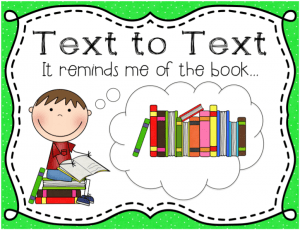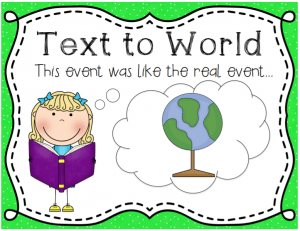
In the second chapter of his book, David Sousa discussed how we learn to calculate by answering the following questions: “Why is learning multiplication so difficult, even for adults? Are we teaching multiplication in the most effective way? Do we really even need to learn the multiplication tables?”

Text-to-Self
This reminds me of when I… I connected to this when… I can connect to the book because…
I was 8 years old. I was in grade 4. I still remember how horrible was the Math session. A part of the routine was to allocate the last 5 minutes to assess how fast we can recall the multiplication tables when the teacher rotated between us and asked each one about the result of a multiplication fact giving only 5 seconds to tell aloud the product; otherwise, the student had to write all the multiplication tables ten times as a punishment for not giving a fast answer or if he/she gave the wrong answer! I hated Mathematics, and I still remember the unpleasant feeling I had toward Math! I was wondering all the time why do we have to memorize these all facts? Two years late, I moved to the middle school and I was blessed to have an awesome teacher who helped me overcome my anxiety in Math by raising my self-confidence and to discover the inner pleasure that I feel each time I teach someone a math concept. And at this moment, I decided to be a Math teacher.
Nowadays, I am a Math coordinator who finds a pleasure while training my colleagues to teach Math, however, and despite all the strategies and tips I provide teachers with, I am still wondering: “Why do children have to memorize the multiplication facts?”

Text-to-Text
This reminds me of another book I read because… This part makes me think of… This is similar to…
In his first chapter, Sousa concluded, based on many research results that because we are born with number sense, that most of us have the potential to be a lot better at arithmetic and mathematics than we think. So why do many students and adults say they “can’t do math”? It is because children in the primary grades encounter a sudden shift from their intuition understanding of numerical quantities and counting strategies to the rote learning of arithmetic facts which unfortunately leads to the loss of their intuition about arithmetic in the process. The idea of the second chapter is to use the students’ innate sense of patterning to build a multiplication network without memorizing the tables themselves. These ideas remind me of Jo Boaler’s thoughts. Boaler said that Mathematics facts are important but the memorization of math facts through times table repetition, practice and timed testing is unnecessary and damaging. She discussed the misinterpretation of the meaning of the Word “fluency”. Moreover, she believed that what is matters in teaching mathematics is to have number sense, which is more important for students to learn, and that includes learning of math facts along with a deep understanding of numbers and the ways they relate to each other. The researchers concluded that low achievers are often low achievers not because they know less but because they don’t use numbers flexibly – they have been set on the wrong path, often from an early age, of trying to memorize methods instead of interacting with numbers flexibly (Boaler, 2009).

Text-to-World
This makes me think about… This part makes me remember… This is like…
All these thoughts drove me to wonder again: “Do we want to spend our kids’ time by teaching them to memorize multiplication tables? What is the purpose? Even though that recognizing pattern is precious, so why our learning goal is still about the fast recall of the facts?
I am not against teaching the facts, however, I am against the approach and the time spent to teach it. Hence, reviewing the Math scope and sequence is required in a way to put less emphasis on memorization and more emphasis on developing number sense and number relationships. Moreover, teachers always commit to teaching what the student will be assessed on. Therefore, two major aspects are required from schools and educators to reflect on and pay attention to: develop a growth mindset in teachers and build a deep vision of assessment as a necessary foundation for teaching and assessing skills, knowledge, and understanding in higher-level mathematics.
I strongly agree with the importance of teaching the “How”.Moreover, empowering number sense in our young learners provides them with confidence in their approach to solving problems.
Couldn’t agree more 👍
Thanks for your feedback Nisrine!